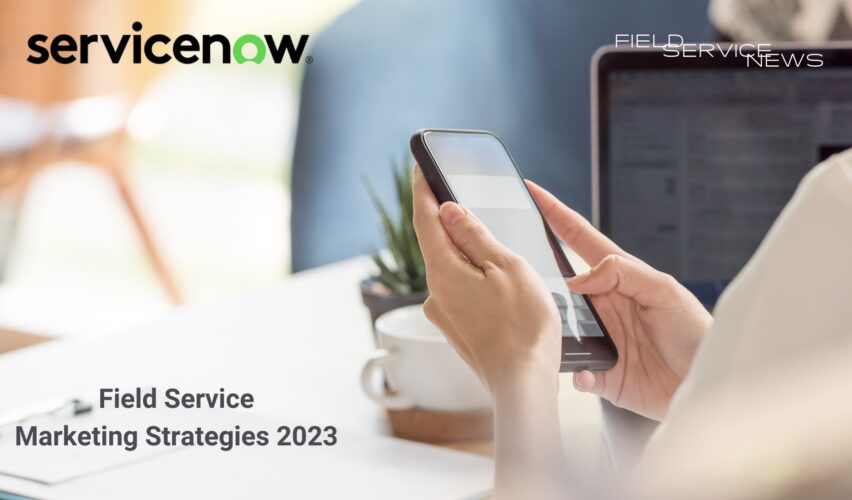Hi – welcome to your dedicated campaign page for 2023!
This page is your central hub for all of your activity with Field Service News. On this page you will find the following:
Total Campaign Elements:
In this section you will find an overview of all the elements in your annual campaign.
Priority Press Release Submission:
As a member of the press partner program you have access to an exclusive priority inbox to submit your press releases. Please do use this inbox rather than personal emails or the generic editorial inbox as we check this inbox when scheduling content ahead of everything else.
The email to use is press-partner@fieldservicenews.com
You may submit as many press releases as you wish although we recommend ensuring a steady cadence wherever possible with an optimum frequency being once per month.
Each press press release you submit will also appear on our weekly newsletter within the trending news section. You can see an example of the newsletter here
Your Custom Sidebar:
When news releases are published they will appear with your customer sidebar which is on the right of this page. You are able to use this space as you wish. As a default we have included a brief company bio, a call to action and a dynamic link to other content that relates to your company.
If you wish to add banners to this sidebar you can do so the options are as follows:
- MPU 300 x 250 (wide by deep)
- Half page – 300 x 600 (wide by deep)
Accepted file types are:
- jpeg
- png
- gif
Max files size is 100kb
You can update this sidebar whenever you wish. We will generally be able to make any changes within two working days but if you want it to be timed with a particular event/activity then please do submit your materials with as much notice as possible.
Solution Theatre Presentations:
As a member of the Press Partner program you are entitled to upload four presentations to the Solutions Theatre.
Solution Theatre presentations are generally about 20-minutes and take the traditional power point approach. When submitting your presentations please submit as video files and also send the original slide deck at the same time (so we can resolve any poor image quality if necessary).
There are multiple ways of recording your presentations, some of our clients use Zoom and others Teams to do so. Our recommendation is to use OBS, which is a free tool but offers more control for how your recording looks.
While you can record a presentation at anytime on any subject, our recommendation is utilise the presentations your colleagues may be giving at industry conferences.
We make this recommendation for 3 reasons:
- It provides your presenter an opportunity to run through the presentation and also review it before they give it in a live environment.
- Your presenters time is valuable – so it makes sense to maximise the impact of any presentations they develop.
- It is easy to plan and incorporate into existing workflows.
Editorial Contributions:
As a member of the Press Partner program you are entitled to submit commentary to FSN features every month. This is a fantastic way of getting your brand and personel consistently aligned with key industry content which requires very little resource or time to leverage.
In the feature calendar section of this page you will find a full calendar year of content themes with one theme per month. Alongside each theme are nine questions that can form the basis of your contribution. You are able to submit between 300 and 600 words which can be just in response to one of the questions or in response to up to three of the questions.
One recommended approach we suggest is to split these contribution up between your key spokespeople. For example if there are four people in the organisation who you are keen to position as thought leaders, ask them each to provide content for 3 of the themes. This would be a total of 1,800 words per spokesperson at the upper limit so shouldn’t be too demanding for them – particularly as the prompt questions are there to guide them.
There are deadlines in place for each month. However, our suggestion is to get your submissions across to us as soon as possible and for each author to send their submissions in one go. This recommendation is purely because it will make it easier for those providing the commentary. Remember, if they wish they can always make changes right up to the deadline – however, having the content lined up in advance is one less thing for you to worry about chasing!
White Paper:
As a member of the creative partner program we will create a white paper written especially for you.
The workflow on this is as follows:
- We agree a topic
- FSN will produce a one page framework document of the paper
- Once approved FSN will write and fully artwork the paper for you.
- Once completed (appx. 2 weeks from receiving your approval of the framework) the following will be added to the projects awaiting approval section of this page
- Link to the paper
- Preview links for serialised features, library page and squeeze page
- Social media quotes for each feature
- Preview links for email drivers
- Upon approval the campaign will be moved into the live projects section of this page with a timeline of activity and the link to the paper will be also added to your created assets section.
- As the campaign progresses data will also be added to the spreadsheet available for you to download from the download data section of this page.
- At the conclusion of the campaign we will produce a report to give you an easy view of the campaign success and this will be added to the end of campaign reports section of this page.
Video Interview:
Also included within your membership of the creative partner program is a long-form video interview. In many respects this will follows the same format as the white paper in terms of how the campaign is delivered.
A couple of minor points to note however:
- Instead of a framework document we will send over a list of talking points for those in the video.
- You can have up to 3 people on the interview. These could all be your colleagues or you could also invite clients to participate as well.
As a Symposium panel host partner you have a number of layers of activity to leverage.
Live event:
Firstly there is the live event which this year is being held on the 11th and 12th of October in Surrey, England.
A provisional agenda has been set for the event which includes a number of potential options for you as ‘off-the-shelf’ options for the panel. However, should you wish to create a fresh discussion you are able to do this as long as the topic is confirmed by the 31st March.
Once the topic is confirmed we will arrange other panelists, who will be practitioners and knowledgable on the subject to participate and arrange a briefing call with all panelists. Your participant is able to either act as moderator or as a panelist – there are benefits to both options which we can talk through with you if you wish to help you arrive at the most optimum choice for you.
Your delegates will also be able to participate in all other sessions except for any Expert AMA sessions that are hosted by other solution providers and the Masterclass sessions.
Finally, there will be a display area for your attendees where lunch and coffee breaks are held where you will have a poser table and space for a roll-up banner.
Digital Panel:
The same panelists will also be brought together for a full professional recording of the panel. The recommended approach for this is for this panel to be recorded and published in advance of the live event. This will allow for us to distribute the recording to Symposium members if they have yet to see it, and also allows the panelists to have a better feel for each others positions.
It is however entirely possible to work in reverse and record the digital version of the panel as a follow up to the event if that is preferred.
FSN PRO+ Discussion Sessions:
A new addition to our Symposium packages for 2023 is that all event partners will be able to access our new series of monthly digital discussion sessions. For 2023 these sessions are available for subscribers on our newly launched FSN PRO+ membership tier so they are non-pitching environments.
However, participating in these sessions offers excellent benefits including better understanding the challenges field service companies are facing as well building consistent touch-points with senior service leaders which can be the fulcrum of meaningful relationships. As many of those present at the live event will also be taking part in the online discussion groups this can be extremely advantageous.
As an event partner you are permitted one attendee per session and you can find the full list of sessions here
Priority Press Releases:
Information about how to use your priority press release publishing access and a browser for previously published press releases.
Please send any press releases to press-partner@fieldservicenews.com
Press releases sent to this inbox will be published within 2 working days unless an embargo is requested.
Your press release will then also feature in the Highlighted News section of our next available newsletter which is published every Monday.
Your Published NEWS
Integrating Customer Experience and Employee Experience
Emphasizing Value Conversations and Defining ROI
Press Partner Feature Calendar
Information on how to submit commentary for appearing in the monthly press partner articles as well an editorial calendar for 2023.
Please send your commentary directly to gaia@fieldservicenews.com
Under each months content request you will find a deadline for submission – please ensure you submit content prior to this date otherwise your commentary may not be included.
If you wish to submit your content for many or all months in one go this is absolutely fine and if necessary you can make amendments prior to each months publication date.
Please send your commentary as a word document and please list the question you are responding to followed by the commentary. If you are responding to multiple questions (reccomended) please structure your commentary as question a > response a > question b > response b etc.
Theme: Building a sense of community amongst our field service workers
Field service is by definition a fairly isolated existence. Our field service workers and technicians are in general working on their own and while interacting with customers is now a core element of the role, nonetheless the field service worker doesn’t have the day-to-day engagement with peers that those of us who work in offices often take for granted. While on the one hand the freedom of a field service role can be hugely appealing, there are potential challenges we must address when considering our field workers lone-worker status.
How can we ensure they remain motivated? Are we able to effectively monitor their mental-well being? And as we enter an era where field workers are increasingly in-demand, how do with foster a sense of belonging amongst the field service workforce so they don’t become disenfranchised and tempted to move to the competition?
One key element in overcoming these challenges is to establish a sense of community amongst our engineers and technicians. In this article we shall explore how this can be achieved.
If you wish to contribute to this content theme, please submit approximately between 300 and 600 words in total. This could be in response to one or multiple of the questions below (we recommend 2 or 3):
- What types of technologies can we use to give technicians access to each other when working in the field?
- What can we do to ensure that our field technicians have a strong work-life balance?
- When it comes to community is smaller better? Or should such initiatives be global?
- For those organisations who operate a dealer network, how much of the responsibility is OEM and how much is dealer?
- Can such communities be built digitally or is the human-to-human element essential?
- What are the benefits of establishing a community amongst field service workers? Tech retention? Improved productivity?
- What are the challenges? Taking staff away from mission critical day-to-day?
- How often should we look to bring our field service technicians together? What type of activity? Team bonding? Training?
- Is there a danger that we risk alienating our field service workers as we move ever more digital?
Submission deadline: Thursday 26th February
Theme: Should engineers and technicians sell?
It is one of the longest running questions within the field service sector – can we harness the trusted advisor status of field service engineers and technicians to drive revenue directly from the field. It is an area of discussion that has been held for a long time but perhaps now with the ongoing economic uncertainty really challenging cashflows across the market field service companies should be seeking to uncover every potential advantage they can to drive additional revenue.
However, will utilising our engineers and technicians to generate field-based revenue eventually come at a greater cost to the field service organisation – or is it a massive opportunity being overlooked? In this series we will be exploring how field service companies may be able to find a balance and the tools and processes required to put field-based revenue generation into practice.
If you wish to contribute to this content theme, please submit approximately between 300 and 600 words in total. This could be in response to one or multiple of the questions below:
- With an ongoing challenging economic backdrop is it more important than ever that we leverage our field workers as a revenue stream?
- Do we risk destroying the trusted advisor of our engineers if we expect them to sell?
- If we do expect our engineers to sell, what type of incentive schemes work?
- Given the workforce shortage amongst field service organisations is it wise to add additional layers of responsibility to their role?
- Could a layer of revenue generation turn off some field workers? Could it attract others?
- How important is transparency with our customers if we are to allow field engineers to sell?
- From a process and technology perspective what needs to be implemented to allow field service engineers to sell?
- How can technology streamline the process of engineers and technicians selling directly or advising sales of potential opportunities?
- Could any form of selling be extended to third-party service providers?
Submission Deadline: Thursday 23rd February
Theme: Do Sustainability and Field Service Agendas Naturally Align?
One of the most pressing topics in all industry at the moment is sustainability – but do green initiatives offer an opportunity or threat to field service organisations?
On the one hand sustainability goals, particularly reducing carbon emissions naturally dovetails with best practices in field service. We have been seeking to reduce travel times to increase tech utilisation and reduce costs long before the conversation around Co2 became prevalent. Similarly, the move to remote service has played a massive role in reducing the carbon footprint of many field service organisations.
However, not every fix can be achieved remotely, sometimes we simply need to get the engineer to the customers site and often we need to get the right parts on site ASAP – especially in a servitized contract where the service company is at risk financially if they fail to meet set guarantees of uptime. This can result in express shipping of parts, often by air – which certainly doesn’t fit within the green ethos.
And what about potential incoming regulation driven by sustainability initiatives that may see the requirement for refurbished parts to be offered? Given that a huge proportion of service revenue is comprised of spare parts sales – could this be a potentially fatal blow to some field service companies when the economy is in such a fragile state?
There is much nuance to this discussion and while we can all agree that sustainability initiatives are the right way forward for us a civilisation, for us as an industry we mustn’t close our eyes to what challenges such initiatives may bring.
In this series we shall be putting forward the case that sustainability and field service can indeed align, but there are pitfalls we must be aware of as we transition to becoming a greener industry.
If you wish to contribute to this content theme, please submit approximately between 300 and 600 words in total. This could be in response to one or multiple of the questions below:
- How many of the elements of sustainability goals align to best practices in field service?
- Can field service organisations use the momentum of green initiatives to gain approval for the tools they need to drive service efficiency?
- Some inherent elements of field service will always be carbon generating – can we mitigate against these at all?
- What can we do to incentivise our field engineers to think about sustainability? Do we need to?
- Will ESG scores unfairly impact certain industries and harm field service operations?
- What could the impact of regulation on refurbished parts mean for field service revenues?
- How does servitization and sustainability dovetail?
- How does technology play a role in helping service organisations reduce their carbon footprint?
- Will demonstrating sustainability goals become a factor in winning service contracts in the near future?
Submission Deadline: Thursday March 30th
How Do We Train the Service Leaders of Tomorrow?
The aim of every great service leader should be to find, train and develop those who will eventually replace them. Not only does this ensure that there is a natural chain of succession in place that offers the continuity required for continuous improvement, but it also frees the senior service leader to further their own career as well.
However, it is often the case that the service leader of today simply doesn’t have the time or support to be able to find and develop their successors effectively and all too often appointments and development are led by HR. Often the end result of this is new service leaders face a baptism of fire as they learn the vital management skills needed for senior service leadership on the job.
In this series we shall be exploring how we can better train the next generation of service leaders while also taking into consideration how rapidly the whole of field service is evolving as we rapidly push our sector forwards through digital transformation.
If you wish to contribute to this content theme, please submit approximately between 300 and 600 words in total. This could be in response to one or multiple of the questions below:
- The traditional route towards field service management has been to progress from a field role – is this still the case?
- All too often critical management skills are developed on the job – should this change?
- There are limited education options for new service managers – what do we need as an industry?
- Is generic management training applicable to field service management?
- Should we be looking to other areas of business for field service managers?
- Is it possible to carve out time for management training given the mission critical nature of field service operations?
- What should we be looking for in future service leaders?
- Given how rapidly we are moving through a period of digital transformation how important is it that new service leaders understand the technologies now being implemented?
- What type of support can solution partners play in helping the development of service leaders for their customers?
Submission deadline: Thursday 27th April
An Impossible Balance Between Workforce Shortages and Service Expectations?
Increasingly it seems that in the field service sector we are heading towards what could become an impossible impasse. On the one side customer expectations are increasing, perhaps the result of the concept of uberisation taking its toll. Yet, on the other the very real workforce shortage in the field service sector is excarbated by many field service engineers now wanting a better work/life balance – partly to demographic change, partly as an unexpected by product of the pandemic lockdowns.
Ultimately, our customers expect faster and more efficient service, while simply maintaining the standards already in place is becoming increasingly challenging for many field service companies.
In this series we shall be exploring how we can try to find a balance between these two trends that are very much at odds with each other.
If you wish to contribute to this content theme, please submit approximately between 300 and 600 words in total. This could be in response to one or multiple of the questions below:
- How can we achieve more with less in the face of an ongoing workforce shortage?
- How much can we automate without losing important customer touchpoints?
- What can we do about the trend for engineers to want less travel and better work-life balance?
- After years of Uberisation of service – how can we manage what appear to be ever increasing customer expectations?
- What do we need to consider when building effective partnerships with third-party service providers?
- Is servitization the answer or is it only going to prove more challenging?
- Does this future inevitably require us to fully embrace remote service?
- What can we do to reduce training times for new recruits into the field service sector?
- Is the deskilling of the field workforce inevitable and can technology make this possible?
Submission deadline: Thursday 25th May
Is Servitization Evolving or Becoming Diluted?
Across the last decade or so we have really seen a huge momentum in the growth of companies offering servitized offerings. However, while there remains a common thread amongst the poster boy examples of servitization such as Alstom, Rolls Royce and Caterpillar increasingly the term is being used to convey a number of different situations as the concept enters the mainstream discussion.
Are Spotify, Netflix or even the mobile phone in your pocket examples of servitization or are they simply examples of subscription services? Does servitization always need to be aligned to a fully outcome-based model or is there a spectrum of servitized offerings? Has the realisation brought on by the pandemic that globalised supply chains are not as robust as we once thought?
Indeed, did the pandemic expose the risk of outcome-based services and make it a less appealing route for field service organisations? Or did the fact that it brought us closer to our customers as we worked against overcoming a universal challenge make the pathway to servitization easier?
In this series we shall be looking at this complex conversation as we evaluate the role servitization will play in the future of field service.
If you wish to contribute to this content theme, please submit approximately between 300 and 600 words in total. This could be in response to one or multiple of the questions below:
- The pandemic highlighted the risk of fully outcome-based models – do we need to find more balance?
- Do we need to offer different layers of servitization for different customers?
- Has the rise of new technologies such as AI and IoT made servitization more accessible?
- How important is it to be able to effectively utilise asset data in a servitized model?
- Has servitization become something of a buzz phrase that isn’t effectively understood?
- Is the transfer of risk involved in outcome-base services been shifted too heavily to the service provider?
- Do we need to have more open conversations with customers about realistic levels of risk?
- Could there be a hybrid model that offers some sort of safety net for service providers should another pandemic arise?
- Has the pandemic taught us to tread more carefully with servitization, or did it make it inevitable?
Submission deadline: Thursday 29th June
Where does remote service sit in the service portfolio?
Remote service has had a meteoric rise since the pandemic. While the technology that underpins effective remote service is relatively mature, and has been around for close to a decade, the sudden requirement for zero-touch service meant that almost all field service companies adopted some form of remote service and the vast majority of those who did, did so rapidly.
So now, with the concept proven and customer acceptance of this new way of work firmly established, we have the time to consider exactly what role remote service should play and where it should sit within the wider service portfolio. Many companies have move to remote service as a default, only sending an engineer to a customers’ site when absolutely necessary. Others, have used remote service more sparingly, sometimes out of necessity, other times out of design, as they do not want to risk losing the powerful presence of the field service engineer having direct access to the customer.
Similarly, some companies are using remote service as a form of enhanced self-service, guiding the customer through the maintenance themselves, while others are using the tools to guide their own less experienced engineers or even third-party partners on the other side of the world, ensuring there is always a subject matter expert available even if they are only virtually present.
- Is Remote Service an opportunity to cut costs, drive revenue or both?
- Should Remote Service be a default first level service approach?
- Can we expect customers to pay the same amount for remote service as they do for onsite service?
- Is it possible to attain trusted advisor status on a remote service call?
- How important is it that remote service technologies are tightly integrated with other systems within the FSM technology stack?
- Is it possible to align the scheduling of remote service calls with onsite calls? Is it necessary?
- How can remote service be integrated with other tools such as chat-bots and AI-enhanced service triage?
- Can remote service offer a lower cost option for transactional service requirements? Can it be sold as a premium upgrade alongside traditional service contracts?
- Is remote service now a standard expectation within the service contract? If not do you think it soon will be?
Submission deadline: Thursday 27th July
How do we stop our digital transformation projects from failing?
Across multiple studies from various sources including Field Service News Research, we have consistently seen that somewhere between two thirds and three quarters of digital transformation projects fail to deliver the expected return on investment.
This is particularly problematic for us in the field service sector as we face multiple challenges currently and various digital transformation projects offer us the keys to overcome them. Whether they are internal programs designed to help us achieve more with less, or external initiatives that allow us to meet and exceed our customer expectations, digital transformation projects are crucial to many field service organisations ability to adapt to a post-pandemic world that is fraught with new and complex issues.
So how do we stop our digital transformation projects from failing? In this series we shall explore the problem from multiple angles.
- How do we define the internal and external benefits of digital transformation?
- How can we ensure our engineers do not feel threatened by digital transformation?
- How do we define success when going through digital transformation?
- What do we need to communicate to customers about our digital transformation projects?
- What level of support can we expect from our technology partners?
- How important is it to consider technology integration when undertaking digital transformation projects?
- Are the fundamental tenets of change management too often overlooked in digital transformation?
- How important is it to ensure that data can flow across systems and insights be easily surfaced?
- Do we expect too much too soon when starting digital transformation projects?
Submission deadline: Thursday August 30th
How do we ensure our customers truly see the value in the services we offer?
As we work through the impact of a global recession it is understandable that our customers will be seeking to cut costs wherever possible. However, many field service companies are already operating on paper thin margins. In such a situation, getting into a position where cost becomes the over-riding factor in whether a service contract gets renewed is a dangerous place to be.
The answer is of course, that if you are selling on cost, then you are having the wrong conversation. It is vital, perhaps now more than ever for the services you deliver to your customers to be a fundamental and critical element of their own operations. Whether that be through a layer of servitization or simply being a proactive service partner, it is vital our customers understand the value we offer as service providers – and to achieve that we need to make sure that we understand their challenges, pain points and perhaps most importantly of all how they make money.
However, while many companies claim to understand their customers’ needs and sell consultively the reality is that often the challenger mentality to do so is missing. In this series we will look at what how we can ensure we can get close enough to our customers to both understand their true needs, and also to outline where our service offerings offer them true value.
- How do we avoid selling on price?
- What lessons can we learn from the software sector in terms of customer success models?
- Do our customers truly understand the cost and value of the service we deliver?
- With workforce shortages increasing, is it possible to meet customer expectations?
- How can we identify the value our customers really need and effectively align our service offerings?
- Who on the customer side should we be selling to? Is procurement’s involvement the moment service contracts fail?
- Can product sales teams effectively sell service?
- How can we involve our technology partners in the discussion to embrace ecosystem thinking?
- How critical is it to be able to demonstrate your commitment to service excellence through your own digital transformation projects?
Submission deadline: Thursday 28th September
What does triage and service workflow look like post digital transformation?
Our industry has gone through so much change in recent years with digital transformation truly reshaping almost every aspect of what was the mainstay of traditional field service in a relatively short period. This rapid development has of course come with its challenges, but equally it opens up so many possibilities to allow us to further streamline service operations – at a time when doing so has never been more imperative.
However, there is a balance that needs to be struck between developing digital transformation plans that allow for iterative progression so momentum isn’t lost and being able to take a step back to see the bigger picture of how multiple different technologies can sit together to build an even more compelling vision of future service operations.
In this series we shall be looking at how many of the modern tools now readily available such as chat-bots, AI and augmented reality can be brought together into a holistic whole, that are not simple digital initiatives but indeed offer true service transformation.
- How much can we expect customers to do in terms of self-help services?
- How do we build trust in Artificial Intelligence tools being as effective as human experts?
- Should there be a clear triage/service process e.g self-help>remote service>on-site?
- How do we ensure our customers see value in virtual service over on-site?
- How can technology providers help us in identifying a vision of the future?
- How do we need to approach communicating changes in process to our contact centre and field workers?
- How do we ensure smooth adoption of new technologies from our service technicians?
- With so many possibilities should we be looking at best-in-class technology stacks or adopting the platform approach?
- How imperative is it that data flows easily across all systems, including non-FSM systems within the wider business?
Submission deadline: Thursday 26th October
What metrics are key to modern field service success?
Peter Drucker’s famous phrase you cannot manage what you do not measure is a mantra that many service leaders are familiar with. In field service there are a number of key metrics that have become a mainstay for establishing successful field service operations for many years, simply because they have proven to be the fundamentals that we can build effective, profitable service around that drives customer satisfaction.
However, with our industry going through seismic change in the last few years, do we need to re-evaluate these or do we just need to re-interpret them through a modern lens that takes into account new approaches to service delivery such as remote service and the shift to servitization?
Do the tried and tested KPIs such as Technician Utilisation and Mean-time-to-repair still hold their place as crucial within field service operations and how should they be viewed in modern field service? Similarly, with service delivery models changing, while customer satisfaction metrics are and always will be crucial, do we need to establish a new foundation upon which we build a more comprehensive understanding of customer sentiment now that we have the tools at our disposal to do so – or are we overcomplicating the process with unnecessary white noise?
In this series we will be looking at all of these considerations as well as reflecting on best-practices when it comes to defining metrics within field service operations.
- Are the traditional primary KPIs such as Tech Utilisation, Mean-Time-To-Repair and Mean-Time-To-Failure etc still central to good field service operations management?
- Is there a magic number of KPIs we should track – can we have too many?
- How can we use KPIs as a management tool to improve performance on the individual engineer level?
- What customer satisfaction metrics offer genuine and meaningful insight?
- In customer success/servitized models – how can we better understand our customers’ core KPIs?
- Are there new KPIs we should consider for remote service?
- Should we re-evaluate what good looks like with certain KPIs in light of digital transformation?
- How often should we be looking at KPIs to assess the performance of our service operations?
- How important is it to establish multiple tiers of KPIs – so we can have a macro view of the service operation overall alongside a micro view of more reactive KPIs to help us ‘move the needle’?
Submission deadline: Thursday 24th November
Field Service: A Year in Review
As we look to the end of 2023 and ahead to 2024 we will evaluate the key themes and topics that have evolved over the year as well as looking at what trends we should expect for the coming year.
In this final series of the year, we will be reflecting on the following:
- What have been the biggest trends that you have seen in the last twelve months?
- What are the key developments in terms of technology adoption that you think have had the biggest impact in the industry?
- What are the challenges that you think are most pressing for field service companies across the next 12 months?
- What is the biggest learning you have made this year?
- What opportunities do you see for field service companies in the year ahead?
- What do you see as being the biggest disruptive influence on the horizon for the field service sector?
- What would be your one piece of advice for field service leaders to take into the new year?
- What would be your key priority looking to the next year?
- What is the technology development on the horizon that we may see become part of our industry next year that excites you the most?
Submission Deadline: 22nd December
Your Published FEATURES
Integrating Customer Experience and Employee Experience
Emphasizing Value Conversations and Defining ROI
Your Live Projects:
In this section you will find links to any projects that are currently live.
Your Created Assets
You have full global republishing writes over any content created for you by Field Service News. Below you will find a list of available content and links to download:
Your Projects Awaiting Approval
This is where you will find projects that are still awaiting your sign off before we can go live.
ThinkTank Live: Debrief Panel ft. Sarang Sambare, Kevin Herring (ServiceNow) and Mark Wilding (ServiceMax)
You can find the full length video here
You can download the video from here. This will let you download up to 720p. If you would like a higher resolution let us know and we can send via WeTransfer.
Alternatively the embed code is also below:
<iframe src=”https://player.vimeo.com/video/780195198?h=2d8e777c68&color=ffffff&title=0&byline=0&portrait=0″ width=”640″ height=”360″ frameborder=”0″ allow=”autoplay; fullscreen; picture-in-picture” allowfullscreen></iframe>
<p><a href=”https://vimeo.com/780195198″>ThinkTank Debrief: The New Frontiers Of Field Service (2023)</a> from <a href=”https://vimeo.com/fieldservicenews”>Field Service News</a> on <a href=”https://vimeo.com”>Vimeo</a>.</p>
You can find the trailer video here
You can download the video from here. This will let you download up to 720p. If you would like a higher resolution let us know and we can send via WeTransfer.
Alternatively the embed code is also below:
<iframe src=”https://player.vimeo.com/video/780528235?h=10432bc2e2&color=ffffff&title=0&byline=0&portrait=0″ width=”640″ height=”360″ frameborder=”0″ allow=”autoplay; fullscreen; picture-in-picture” allowfullscreen></iframe>
<p><a href=”https://vimeo.com/780528235″>FSN Live! ThinkTank Debrief Session (trailer)</a> from <a href=”https://vimeo.com/fieldservicenews”>Field Service News</a> on <a href=”https://vimeo.com”>Vimeo</a>.</p>
You can find a preview of the squeeze page for this campaign here
The library page is where the resource can be accessed by those already subscribed to FSN.
You can find the library page for your resource here
The preview link for this feature is here
You can download the video in this feature here
The embed code for the video is below
<iframe src=”https://player.vimeo.com/video/780205750?h=4773bdba71&color=ffffff&title=0&byline=0&portrait=0″ width=”640″ height=”360″ frameborder=”0″ allow=”autoplay; fullscreen; picture-in-picture” allowfullscreen></iframe>
<p><a href=”https://vimeo.com/780205750″>The Shift To Remote Service</a> from <a href=”https://vimeo.com/fieldservicenews”>Field Service News</a> on <a href=”https://vimeo.com”>Vimeo</a>.</p>
Social media quotes:
Sarang Sambare @Syncron reflects on the discussions he held with #ServiceLeaders at this years #FieldServiceSymposium around the widespread shift to #RemoteService in our industry
“Most #ServiceOrganisations have #RemoteService as a level of priority in their business now” – Sarang Sambare @Syncron
We had a really candid discussion that there has to be a balance point when looking at #RemoteService – Sarang Sambare @Syncron reflects on the discussions he held at #FieldServiceForum
The preview link for this feature is here
You can download the video in this feature here
The embed code for the video is below:
<iframe src=”https://player.vimeo.com/video/780196272?h=dc23b40823&color=ffffff&title=0&byline=0&portrait=0″ width=”640″ height=”360″ frameborder=”0″ allow=”autoplay; fullscreen; picture-in-picture” allowfullscreen></iframe>
<p><a href=”https://vimeo.com/780196272″>A Challenging Cycle of Recruitment</a> from <a href=”https://vimeo.com/fieldservicenews”>Field Service News</a> on <a href=”https://vimeo.com”>Vimeo</a>.</p>
Social media quotes:
Sarang Sambare @Syncron discusses the ongoing challenges that were discussed at the #FieldServiceSymposium about the #FieldService #WorkforceCrisis.
“When I have talked to #ServiceLeaders over the past three years and ask what are they worried about in the next few years the conversation always ends up with the workforce” Sarang Sambare @Syncron on the #FieldService #WorkforceCrisis
“If you can use technology to fill the knowledge gap then you can look at hiring around softer-skills that can effectively leverage the face-to-face interaction that #FieldService offers” Sarang Samabare @Syncron
The preview link for this feature is here
You can download the video in this feature here
The embed code for the video is below:
<iframe src=”https://player.vimeo.com/video/780200865?h=d35dfdd107&color=ffffff&title=0&byline=0&portrait=0″ width=”640″ height=”360″ frameborder=”0″ allow=”autoplay; fullscreen; picture-in-picture” allowfullscreen></iframe>
<p><a href=”https://vimeo.com/780200865″>Are field service leaders drowning in data</a> from <a href=”https://vimeo.com/fieldservicenews”>Field Service News</a> on <a href=”https://vimeo.com”>Vimeo</a>.</p>
Social Media Quotes:
Syncron’s Sarang Sarambe and ServiceNow’s Kevin Herring Discuss How Field Service Leaders Can Overcome The Challenge Of Drowning In Data?
“Sometimes there can be #DataOverload. You Really need to work out what actions are you seeking to drive from the data” Sarang Sambare @Syncron
“How you use data very much depends on the specifics of the type of service you are undertaking. There is no one size fits all in this regard” Kevin Herring @ServiceNow on #AssetData
The preview link for this feature is here
You can download the video in this feature here
The embed code for the video is below:
<iframe src=”https://player.vimeo.com/video/780209148?h=5bf539474c&color=ffffff&title=0&byline=0&portrait=0″ width=”640″ height=”360″ frameborder=”0″ allow=”autoplay; fullscreen; picture-in-picture” allowfullscreen></iframe>
<p><a href=”https://vimeo.com/780209148″>3 Big Ideas You Need To Know As Service Leader</a> from <a href=”https://vimeo.com/fieldservicenews”>Field Service News</a> on <a href=”https://vimeo.com”>Vimeo</a>.</p>
Think Tank Sessions: Do we need to redefine field service completely? EU Edition
Duration:
- Start: TBD
- Concludes: TBD
Activity Timeline
- TBD – Email Driver to FSN Audience
- TBD – Newsletter (Highlighted Resource)
- TBD – Feature One
- TBD – Newsletter (Key Analysis & Features)
- TBD – Feature Two
- TBD – Newsletter (Key Analysis & Features)
- TBD – Feature Three
- TBD – Newsletter (Key Analysis & Features)
- TBD – Feature Four
- TBD – Newsletter (Key Analysis & Features)
- TBD – Feature Five
- TBD – Newsletter (Key Analysis & Features)
- TBD – Feature Six
- TBD – Newsletter (Key Analysis & Features)
- TBD – Feature Seven
- TBD – Newsletter (Key Analysis & Features)
- TBD – Feature Eight
- TBD – Newsletter (Key Analysis & Features)
You can find the white paper here
A video trailer of the white paper is here
You can download the video trailer from here. This will let you download up to 720p. If you would like a higher resolution let us know and we can send via WeTransfer.
Alternatively the embed code is also below:
<iframe src=”https://player.vimeo.com/video/771920670?h=21c3990813&badge=0&autopause=0&player_id=0&app_id=58479″ width=”1280″ height=”720″ frameborder=”0″ allow=”autoplay; fullscreen; picture-in-picture” allowfullscreen title=”(trailer) Think Tank Sessions: Do we need to redefine field service?”></iframe>
The library page is where the resource can be accessed by those already subscribed to FSN.
You can find the library page for your resource here
The preview link for this feature is here
The preview link for this feature is here
The preview link for this feature is here
The live link for this feature is here
The live link for this feature is here
The live link for this feature is here
The live link for this feature is here
Think Tank Sessions: Do we need to redefine field service completely? US Edition
Duration:
- Start: TBD
- Concludes: TBD
Activity Timeline
- TBD – Email Driver to FSN Audience
- TBD – Newsletter (Highlighted Resource)
- TBD – Feature One
- TBD – Newsletter (Key Analysis & Features)
- TBD – Feature Two
- TBD – Newsletter (Key Analysis & Features)
- TBD – Feature Three
- TBD – Newsletter (Key Analysis & Features)
- TBD – Feature Four
- TBD – Newsletter (Key Analysis & Features)
- TBD – Feature Five
- TBD – Newsletter (Key Analysis & Features)
You can find the white paper here
A video trailer of the white paper is here
You can download the video trailer from here. This will let you download up to 720p. If you would like a higher resolution let us know and we can send via WeTransfer.
Alternatively the embed code is also below:
<iframe src=”https://player.vimeo.com/video/771920670?h=21c3990813&badge=0&autopause=0&player_id=0&app_id=58479″ width=”1280″ height=”720″ frameborder=”0″ allow=”autoplay; fullscreen; picture-in-picture” allowfullscreen title=”(trailer) Think Tank Sessions: Do we need to redefine field service?”></iframe>
The library page is where the resource can be accessed by those already subscribed to FSN.
You can find the library page for your resource here
The preview link for this feature is here
The preview link for this feature is here
The preview link for this feature is here
The live link for this feature is here
Your Planned Projects
This is where you will find projects that we have agreed on and are currently in the development stage.
Your Remaining Elements
This is a list of the elements that you have yet to plan but are available to you in your annual campaign
- 2 x Full Length Video Interview + Serialisation (proposed)
- 2 x White Paper + serialisation (proposed)
- 4 x Solutions Theatre Presentations (proposed)
- 1 x Panel Discussion (Digital including serialisation)
- Panel Discussion (Live)
- 2 x FSN PRO+ licences
- 5 x FSN PRO licences
- 1 x Delegate per FSN PRO + Discussion Session (proposed)
Your Download Data
Here you will find the link to a spreadsheet with all download data from your marketing activity with FSN.
For GDPR compliance, a password to access the spreadsheet with be emailed to you separately.
Your Campaign Reports
After the conclusion of each element within your annual campaign we will produce a brief executive briefing report that outlines the campaign for you and which you can share with relevant colleagues. These reports will be available in this section.














